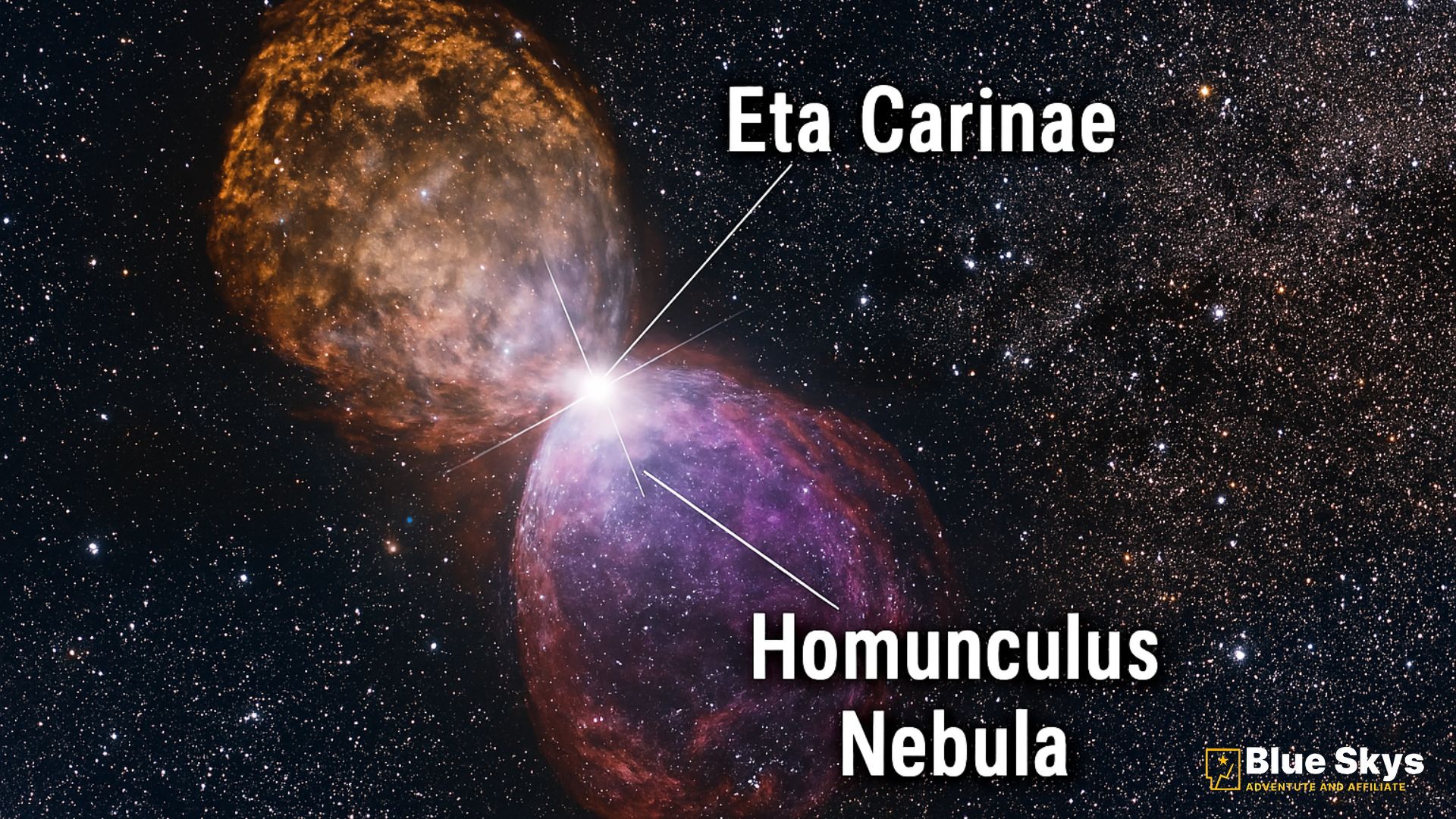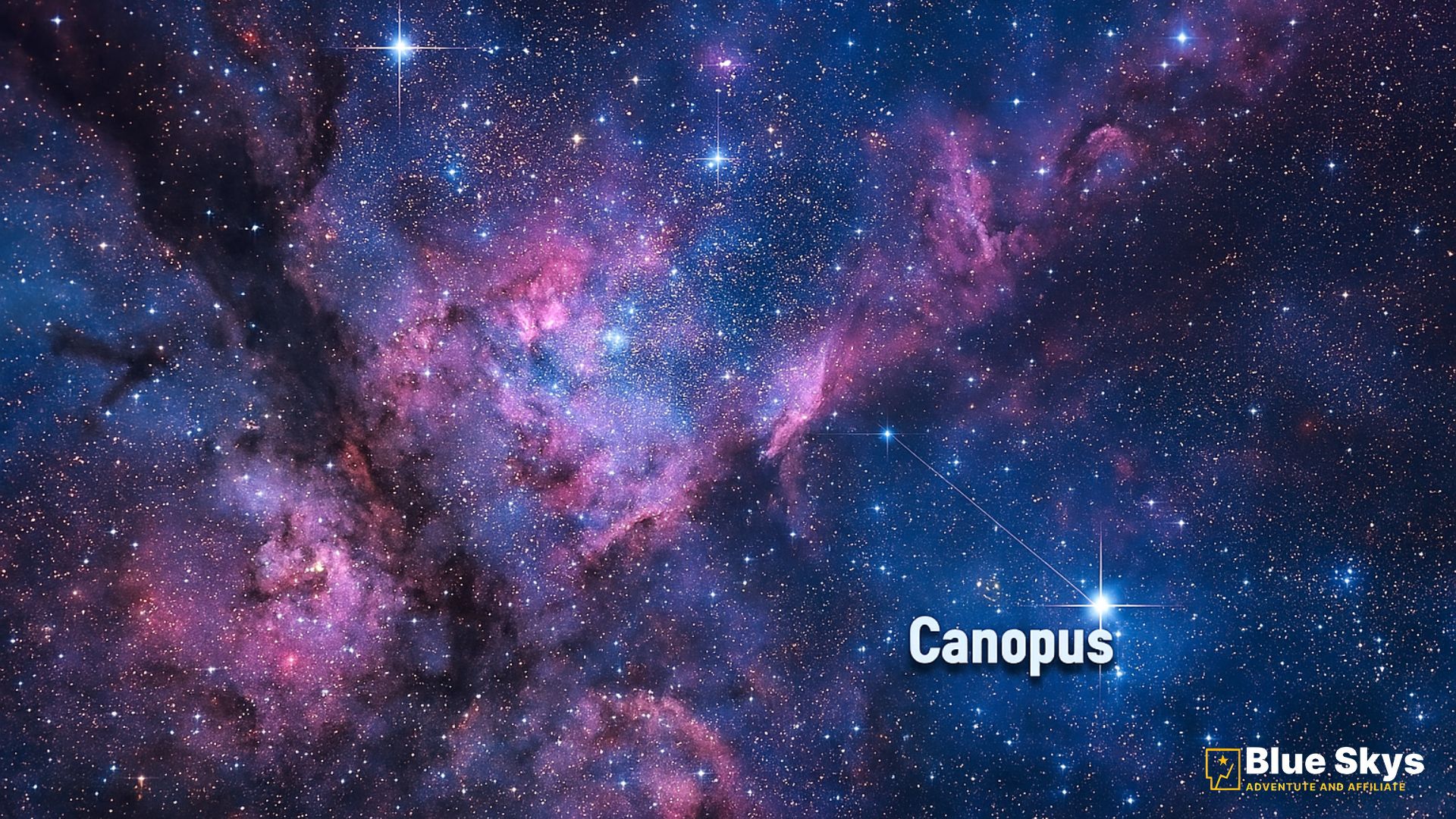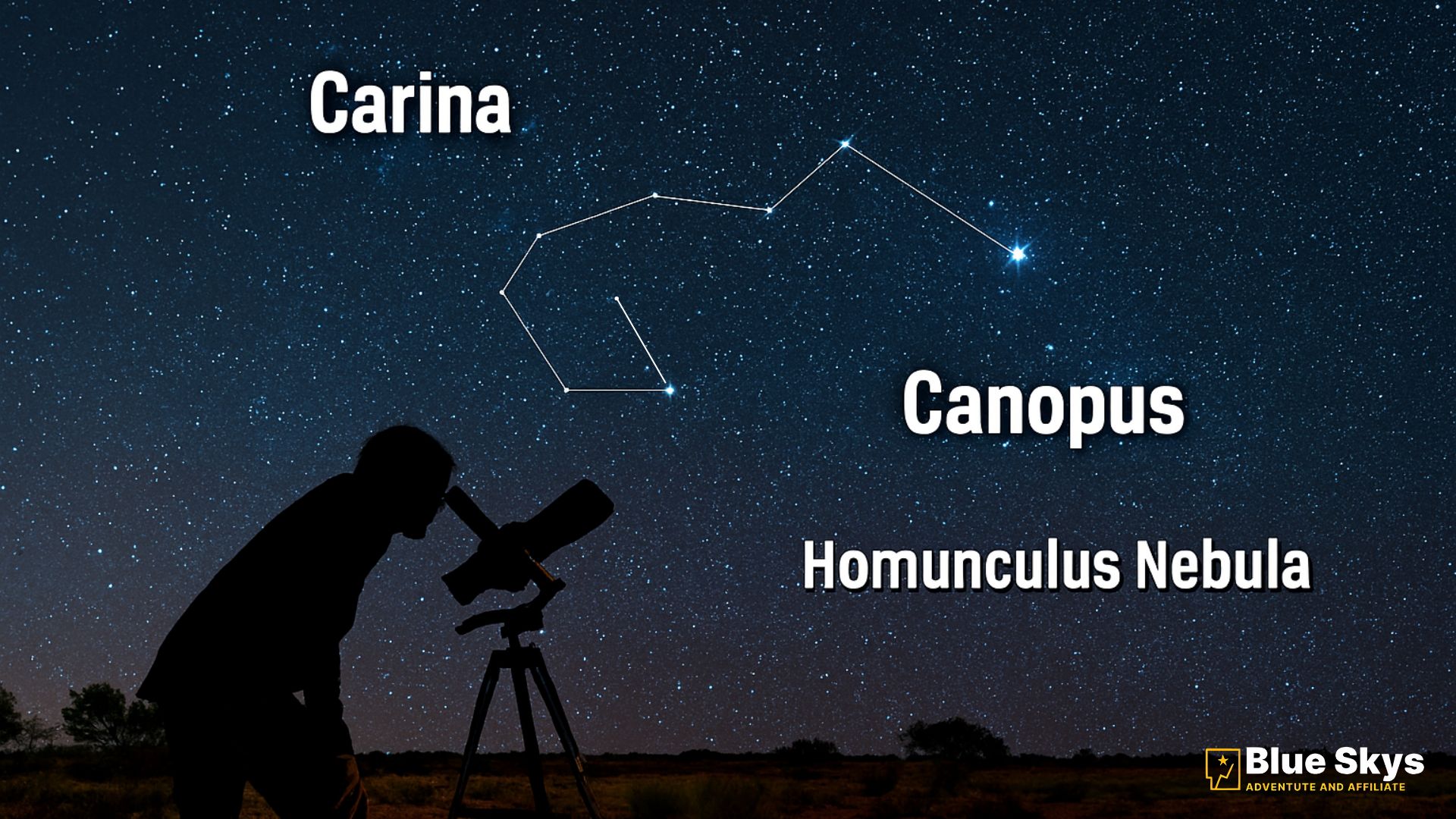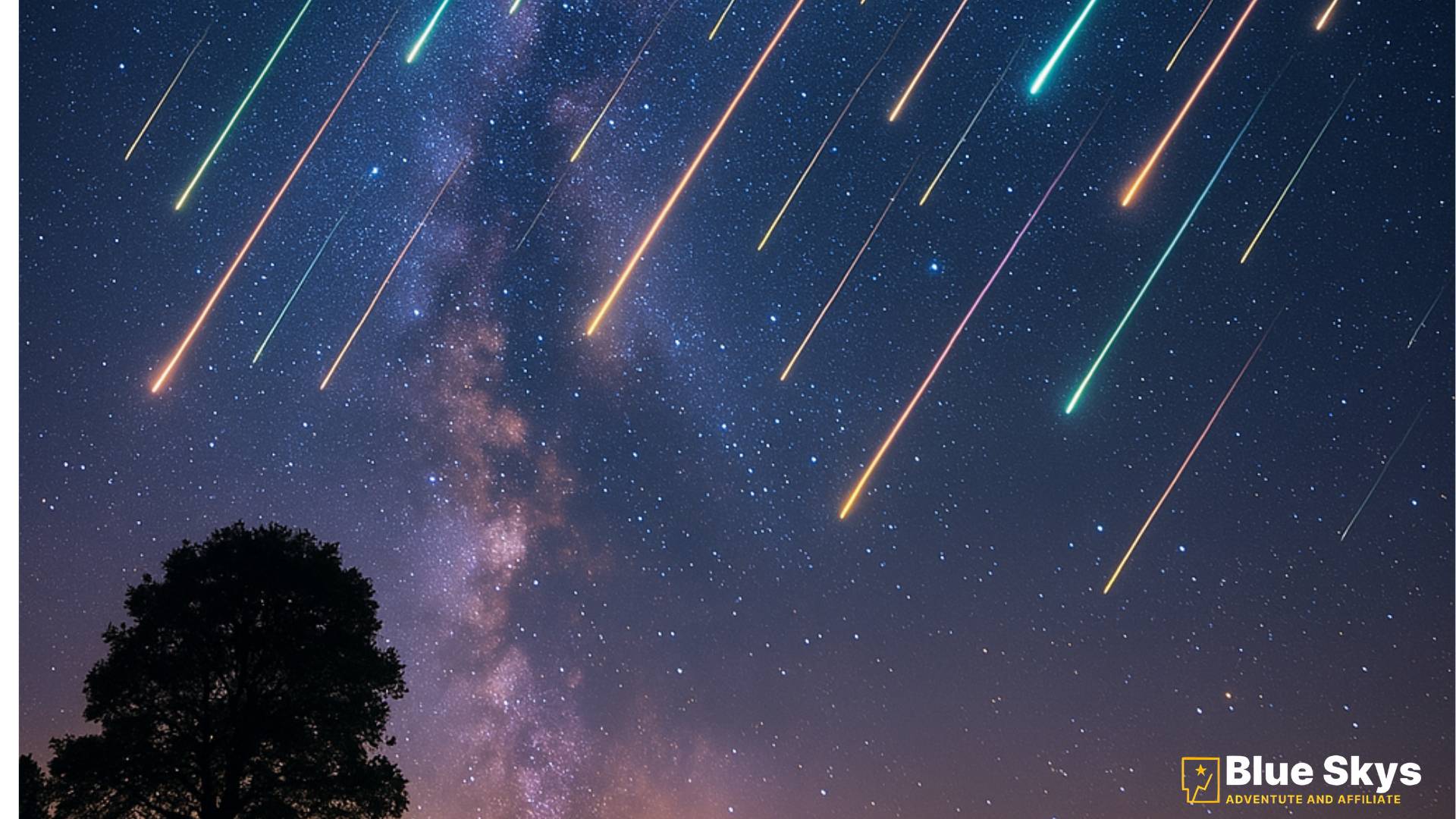The night sky has always fascinated humanity. Among the southern stars, Canopus stands out as a radiant beacon, second only to Sirius in brightness. It lies within the Carina constellation, a remarkable part of the Milky Way rich in celestial wonders. Together, they paint one of the most captivating views in the southern hemisphere — a spectacle loved by stargazers and astronomers alike.
1. What is the Carina Constellation?
The Carina constellation, meaning “the keel of a ship” in Latin, represents the lower section of the mythical ship Argo Navis. Once part of a larger constellation, Carina now stands independently and contains some of the most luminous stars in the sky, including Canopus, Eta Carinae, and Miaplacidus.
Carina lies in the southern celestial hemisphere and is best visible from Australia, New Zealand, South Africa, and South America. Its position makes it a favorite for southern stargazing, offering a rich field of nebulae, open clusters, and variable stars.
2. The Legend Behind Carina
The constellation’s roots go back to Greek mythology. Carina formed part of Argo Navis, the ship used by Jason and the Argonauts in their quest for the Golden Fleece. When astronomers later divided Argo Navis, Carina remained as the ship’s keel — a symbol of navigation, discovery, and adventure.
3. Meet Canopus – The Second Brightest Star
Canopus (Alpha Carinae) is the brightest star in Carina and the second brightest star in the night sky, just behind Sirius. It glows with a brilliant white-yellow light, making it a stunning sight in clear southern skies. Located about 310 light-years from Earth, Canopus is a supergiant star, around 10,000 times more luminous than the Sun.
For centuries, sailors used Canopus as a navigational star. Its consistent position in the sky helped ancient explorers determine latitude when sailing across the vast oceans of the southern hemisphere.
4. Why Canopus is Scientifically Important
Canopus isn’t just beautiful — it’s scientifically significant. Astronomers use it as a calibration point for spacecraft and satellites because of its stable brightness. The Voyager and Pioneer missions used Canopus for navigation, and it continues to be a reference star for modern space probes.
5. The Spectacular Eta Carinae Nebula

Within the Carina constellation lies the Eta Carinae Nebula, one of the most massive and luminous star-forming regions in our galaxy. It houses Eta Carinae, a pair of enormous stars that have fascinated scientists due to their unpredictable eruptions and brightness changes.
The Homunculus Nebula, formed from Eta Carinae’s massive outburst in the 19th century, remains one of the most studied objects in astrophysics.
6. Deep Sky Objects in Carina

Beyond Canopus and Eta Carinae, the Carina constellation hosts numerous deep-sky treasures:
-
NGC 3372 (Carina Nebula) – a vast emission nebula glowing with gas and dust.
-
NGC 3532 (Wishing Well Cluster) – a bright open cluster visible even through binoculars.
-
NGC 2808 – a globular cluster with millions of ancient stars.
These objects make Carina a must-see target for astrophotographers and amateur astronomers.
7. When and Where to See Carina

To see Carina and Canopus at their best, look up during the southern summer months (January to March). Observers in Australia, New Zealand, and southern Africa can easily spot the constellation high above the southern horizon.
Canopus appears as a steady, non-twinkling white light, standing out from other stars due to its intense brightness.
8. Canopus in Navigation and Culture
For centuries, Canopus guided travelers, sailors, and even ancient civilizations. The Egyptians associated it with Osiris, the god of the afterlife, while in China, it was known as the “Old Man Star,” symbolizing longevity and wisdom.
In modern times, Canopus remains an essential astronomical reference star, linking ancient navigation with cutting-edge space exploration.
9. Relationship Between Canopus and Sirius
While both stars are prominent, Sirius and Canopus serve as twin markers of the southern sky. In certain regions, the two can be seen shining together — Sirius leading and Canopus following, almost like celestial companions guiding the night.
10. Canopus and the Milky Way
Carina lies along one of the brightest stretches of the Milky Way, providing a stunning backdrop of cosmic clouds and star clusters. This region is dense with interstellar gas and young, hot stars, making it a paradise for astrophotography and stargazing tours.
11. Observing Tips for Beginners
If you’re new to stargazing:
-
Use a simple telescope or binoculars to capture the Carina Nebula.
-
Avoid moonlit nights for better clarity.
-
Visit dark-sky reserves in Australia or New Zealand to experience the constellation in full brilliance.
Apps like Stellarium or SkySafari can help you identify Canopus and neighboring constellations such as Vela and Puppis.
12. Canopus in Modern Astronomy
Today, Canopus plays a vital role in space navigation. It’s used as a guidance star for satellites and deep-space probes, ensuring accurate orientation when far from Earth. Its brightness and stability make it ideal for such precision work — a perfect blend of beauty and functionality.
13. Carina’s Role in Southern Hemisphere Astronomy
For observatories in the southern hemisphere, Carina provides a window into stellar evolution and supernova formation. Its nebulae and clusters are key research targets, helping scientists understand how massive stars live and die.
14. Fun Facts About Canopus and Carina
-
Canopus is 71 times larger than the Sun.
-
It’s so bright that it’s been used to align spacecraft like Cassini and Apollo.
-
The Carina constellation is home to dozens of open clusters and nebulae visible through small telescopes.
-
In Polynesian navigation, Canopus marked important seasonal changes for ocean voyagers.
15. Why Carina and Canopus Matter
Together, Canopus and the Carina constellation remind us how human curiosity reaches beyond Earth. From guiding ancient sailors to supporting modern space missions, they bridge myth, science, and exploration — shining symbols of our desire to understand the universe.
Conclusion
The story of Canopus and the Carina constellation is more than just astronomy — it’s a tale of discovery, mythology, and wonder. Whether you’re an astrophotographer, a casual stargazer, or simply someone who loves the night sky, this region offers an experience you won’t forget.
Next time you gaze south, look for the brilliant light of Canopus and let it guide your imagination across the vast Milky Way.







